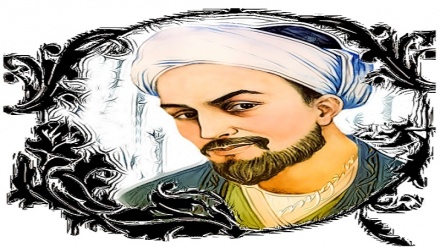Iranian Notables, Sources of Global Honor (89)
Today, we continue to study the measures taken by Mir Seyed Ali Hamedani in Kashmir, and his role in promotion of Iran’s arts and handicrafts in this region of the world.
As a reminder, Seyed Ali Hamedani was a renowned Iranian mystic of 8th Century AH, who spent his entire life for promotion of the divine religion of Islam, purification of soul, and education of those, who sought the truth and the righteous path, in Kashmir and Tajikistan. He was known as Sultan al-Aarefin among scientists. He also earned the title of King of Hamedan among his students and supporters. Moreover he is popularly known as Hazrat Amir Jaan in Tajikistan.
Born in the city of Hamedan in the year 714 AH, the great Iranian mystic, Mir Seyed Ali Hamedani completed his preliminary studies in his hometown. Later on, he attended the classes of prominent lecturers of his time and was highly influenced by them in his efforts for purification of soul and attainment of spiritual growth. Meanwhile, his lecturers called on him to promote the divine religion of Islam, overseas. He shouldered this duty his entire life, while also grooming a large number of students.
It was also said that Mir Seyed Ali Hamedani traveled to Kashmir three times, in his lifetime.
All sources believe that numerous Ulema, artists, and craftsmen from Iran, Iraq, Kabul, and Bukhara accompanied Mir Seyed Ali Hamedani in these journeys. Many of them took up residence in Kashmir; and currently their descendants reside in Kashmir and other regions of India.
Countless historians opine that the artists and craftsmen, who accompanied Mir Seyed Ali Hamedani in his journeys, brought about their regional arts and handicrafts to Kashmir, and with the help of Mir Seyed Ali’s teachings on the necessity of maintenance of work ethics; these arts and crafts were further developed and immortalized in Kashmir. As of this phase in time, the economic and social conditions of Kashmir Valley significantly advanced. Upon the demise of Mir Seyed Ali Hamedani, his son, Seyed Mohammad Hamedani, continued his father’s path, and in a journey to Kashmir, took a number of Ulema and craftsmen with him, over there.
According to the overwhelming majority of sources of information; roughly 700 people accompanied Mir Seyed Ali Hamedani in his journey to Kashmir. His co-travelers promoted Iranian arts and handicrafts in that region as part of efforts to fulfill the aspirations of Hamedani in establishment of a self-sufficient and ideal community. These sources point out that the scarf-weaving industry was on the verge of bankruptcy in Kashmir, concurrent with the arrival of Hamedani in that region, while upon his arrival, and thanks to the relentless and unwavering support of Sultan Qotb Ed-Din for Hamedani’s plans, the scarf-weaving industry was revived, turning into an economic mainstay for the residents of Kashmir, and a highly profitable industry.
Hamedani made a living out of production of hats; via which he taught the public the need to maintain work ethic. After the demise of Hamedani, the hat production industry remained as one of Kashmir’s handicrafts and has been one of the means of livelihood of a lion’s share of Kashmiris to this day.
Hamedani’s efforts to promote Iranian handicrafts in Kashmir were not confined to production of hats and scarfs. In fact, he also promoted other handicrafts in that region to an extent that the large majority of historians attribute the emergence and development of handicrafts in Kashmir to Mir Seyed Ali Hamedani. The French researcher, Henry Corbin, has named Hamedani as the promoter of countless arts in Kashmir.
In addition to transference of modern sciences, culture, and values from Iran to Kashmir, Hamedani gave rise to a different atmosphere in Kashmir via development of Iran’s arts and industries in that region, thereby taking arts and industries to a new level in Kashmir, and granting fame and economic prosperity to this part of India. Some of these crafts are production of woolen and silk fabrics, and production of high-quality, valuable, and colorful carpets, which display unique designs.
Throughout the course of history, these arts and industries have become commonplace in Kashmir. The Iranian culture has been exported to Kashmir, coupled with the Iranian arts, professions, and industries which have made their way from Iran to that region; such that many exported Iranian professions to Kashmir have retained their original Iranian names.
The rulers of Kashmir warmly welcomed and backed the development of these originally Iranian crafts in their region.
Meanwhile, Kashmiri arts and industries were blended with Iranian arts and industries, putting all conditions in place for the growing influence of the Islamic-Iranian culture in North India.
In his second visit to Kashmir for promotion of Islam, Hamedani also paid a short visit to Ladakh. He used a type of wool, found in that region, for production of woolen scarfs. This type of wool was one of a kind, and totally priceless. Upon this measure, a new phase was unfolded in Kashmir’s scarf production industry, which has played a positive and decisive role in that region’s economy, ever since. Thus, in addition to being a devout figure, Hamedani is also known for his part in thriving and flourishing regional economy in Kashmir. The majority of researchers believe that upon the entry of Hamedani to Kashmir, the culture and economy of Kashmir was totally revolutionized.
MR/ME


